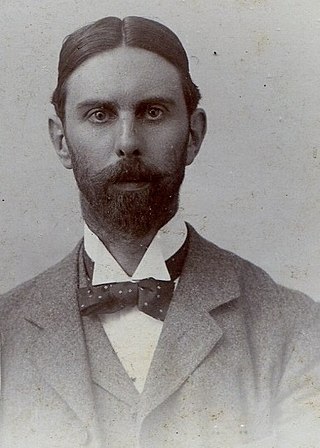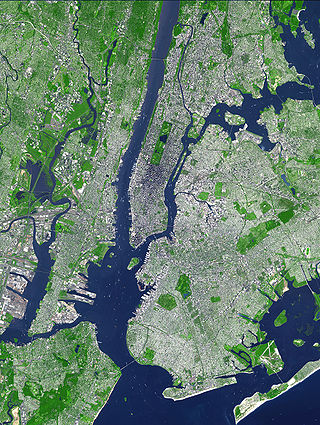
Manhattan is the most densely populated and geographically smallest of the five boroughs of New York City. The borough is also coextensive with New York County, one of the original counties of the U.S. state of New York. Located near the southern tip of the State of New York, Manhattan is based in the Eastern Time Zone and constitutes both the geographical and demographic center of the Northeast megalopolis and the urban core of the New York metropolitan area, the largest metropolitan area in the world by urban landmass. Over 58 million people live within 250 miles of Manhattan, which serves as New York City's economic and administrative center, cultural identifier, and the city's historical birthplace. Residents of the outer boroughs of New York City often refer to Manhattan as "the city". Manhattan has been described as the cultural, financial, media, and entertainment capital of the world, and hosts the United Nations headquarters. Manhattan also serves as the headquarters of the global art market, with numerous art galleries and auction houses collectively hosting half of the world's art auctions.

The written history of New York City began with the first European explorer, the Italian Giovanni da Verrazzano in 1524. European settlement began with the Dutch in 1608.
The history of New York City has been influenced by the prehistoric geological formation during the last glacial period of the territory that is today New York City. The area was long inhabited by the Lenape; after initial European exploration in the 16th century, the Dutch established New Amsterdam in 1626. In 1664, the British conquered the area and renamed it New York.
The history of New York City (1665–1783) began with the establishment of English rule over Dutch New Amsterdam and New Netherland. As the newly renamed City of New York and surrounding areas developed, there was a growing independent feeling among some, but the area was decidedly split in its loyalties. The site of modern New York City was the theater of the New York Campaign, a series of major battles in the early American Revolutionary War. After that, the city was under British occupation until the end of the war and was the last port British ships evacuated in 1783.
The history of New York City (1784–1854) started with the creation of the city as the capital of the United States under the Congress of the Confederation from January 11, 1785, to Autumn 1788, and then under the United States Constitution from its ratification in 1789 until moving to Philadelphia in 1790. The city grew as an economic center with the opening of the Erie Canal in 1825; the growth of its railroads added to its dominance. Tammany Hall began to grow in influence with the support of many Irish immigrants, culminating in the election of the first Tammany mayor, Fernando Wood, in 1854. The city had become the nation's most important port and financial center and competed with Boston as the center of high culture.
The history of New York City (1855–1897) started with the inauguration in 1855 of Fernando Wood as the first mayor from Tammany Hall, an institution that dominated the city throughout this period. Reforms led to the New York City Police Riot of June 1857. There was chaos during the American Civil War, with major rioting in the New York Draft Riots. The Gilded Age brought about prosperity for the city's upper classes amid the further growth of a poor immigrant working class, as well as an increasing consolidation, both economic and municipal, of what would become the five boroughs in 1898.

Isaac Newton Phelps Stokes was an American architect. Stokes was a pioneer in social housing who co-authored the 1901 New York tenement house law. For twenty years he worked on The Iconography of Manhattan Island, a six-volume compilation that became one of the most important research resources about the early development of the city. His designs included St. Paul's Chapel at Columbia University and several urban housing projects in New York City. He was also a member of the New York Municipal Arts Commission for twenty-eight years and president for nine of these.

St. Paul's Chapel, on the Morningside Heights campus of Columbia University in Manhattan, New York City, is an Episcopal church built in 1903–07 and designed by I. N. Phelps Stokes, of the firm of Howells & Stokes. The exterior is in the Northern Italian Renaissance Revival style while the interior is Byzantine.

Anson Phelps Stokes was a wealthy American merchant, property developer, banker, genealogist and philanthropist. Born in New York City, he was the son of James Boulter and Caroline Stokes. His paternal grandfather was London merchant Thomas Stokes, one of the 13 founders of the London Missionary Society. His maternal grandfather, Anson Greene Phelps, was a New York merchant, born in Connecticut and descended from an old Connecticut family.

The Castello Plan – officially entitled Afbeeldinge van de Stadt Amsterdam in Nieuw Neederlandt – is an early city map of what is now the Financial District of Lower Manhattan from an original of 1660. It was created by Jacques Cortelyou, a surveyor in what was then called New Amsterdam – later renamed by Province of New York settlement as New York City. The map that is presently in the New York Public Library is a copy created around 1665 to 1670 by an unknown draughtsman from a lost Cortelyou original.

Jan Evertsz Bout, was an early and prominent Dutch settler in the 17th century colonial province of New Netherland.

The Apthorp Farm that lay on Manhattan's Upper West Side straddled the old Bloomingdale Road, laid out in 1728, which was re-surveyed as The "Boulevard" – now Upper Broadway. It was the largest block of real estate remaining from the "Bloomingdale District", a rural suburb of 18th-century New York City. Legal disputes between the eventual heirs of the Loyalist Charles Ward Apthorp and purchasers of parcels of real estate held in abeyance the speculative development of the area between 89th and 99th Streets, from Central Park to the Hudson River until final judgment was awarded in July 1910; at that time the New York Times estimated its worth at $125,000,000.

The Sawkill or Saw-kill was the largest hydrological network on Manhattan island prior to the founding of the Dutch colony of New Netherland in 1624. This 44,980-foot-long (13,710 m) stream began "within four blocks of the Hudson River":
A rill flowing east from the rocky ridge overlooking Bloomingdale Village, which rose near Ninth Avenue and 85th Street, flowed in a southerly direction through Manhattan Square, where it spread into a little pond, and then turned east, crossing Central Park to Fifth Avenue, receiving three tributaries within its limits, two from the north and one from the south. At 75th Street near Third Avenue it was joined by another stream. Near this junction the old Boston Post Road crossed it, and then from this point, the stream ran due east to its outlet near the foot of 75th Street

McGowan's Pass is a topographical feature of Central Park in New York City, just west of Fifth Avenue and north of 102nd Street. It has been incorporated into the park's East Drive since the early 1860s. A steep hill descending into a switchback road, it is a popular training route for competitive bicyclists and runners.

Fort Clinton was a stone-and-earthworks fortification on an elevation within what is now Central Park in New York City. It was built in 1814 near the present line of 107th Street, slightly west of Fifth Avenue. According to maps of the time, Fort Clinton was the easternmost of a connected series of forts, connected to Nutter's Battery on the west by earthworks and a gatehouse over the Old Post Road at the bottom of McGowan's Pass. Fort Clinton and Nutter's Battery were commanded from a third fort at the top of the pass, Fort Fish, which had a sweeping view of Long Island Sound, northern Manhattan, and Westchester County. Fort Fish was across the road from Fort Clinton and connected to Nutter's Battery by another line of earthworks.

Cyrus Lazelle Warner (1789–1852) was an American architect in New York City. He designed the Greek Revival architecture Kahal Kadosh Beth Elohim Synagogue, built in 1840 in Charleston, South Carolina, as well as a church in a similar style two years earlier. He was also involved in the Merchant's Exchange Building with Isaiah Rogers. He had his office at 122 Broadway from 1842 until 1847.
The Land of the Blacks was a village settled by people of African descent north of the wall of New Amsterdam from about 1643 to 1716. It represented an economic, legal and military modus vivendi reached with the Dutch West India Company in the wake of Kieft's War. This buffer area with the native Lenape is sometimes considered the first free African settlement in North America, although the landowners had half-free status. Its name comes from descriptions in 1640s land conveyances of white-owned properties as bordering the hereditament or freehold "of the Blacks".

The land comprising New York City holds approximately 5.2 million trees and 168 different tree species, as of 2020. The New York City government, alongside an assortment of environmental organizations, actively work to plant and maintain the trees. As of 2020, New York City held 44,509 acres of urban tree canopy with 24% of its land covered in trees.

The Manatus Map is a 1639 city map of New Amsterdam and other New Netherland settlements surrounding New York Harbor, with pictorial elements, and bearing the title Manatus on the North River. Drafted during the period of Willem Kieft's directorship, its authorship is uncertain. Edward Van Winkle of the Holland Society of New York attributed it to the Dutch cartographer Johannes Vingboons, who made many manuscript maps for the West India Company. Isaac Newton Phelps Stokes did not exclude any of several candidates except for Andries Hudde, due to travel back to Europe for his marriage in that year.
Peter Mesier Sr. was an American merchant and politician who served as alderman of New York City's West ward from 1759 to 1763.













